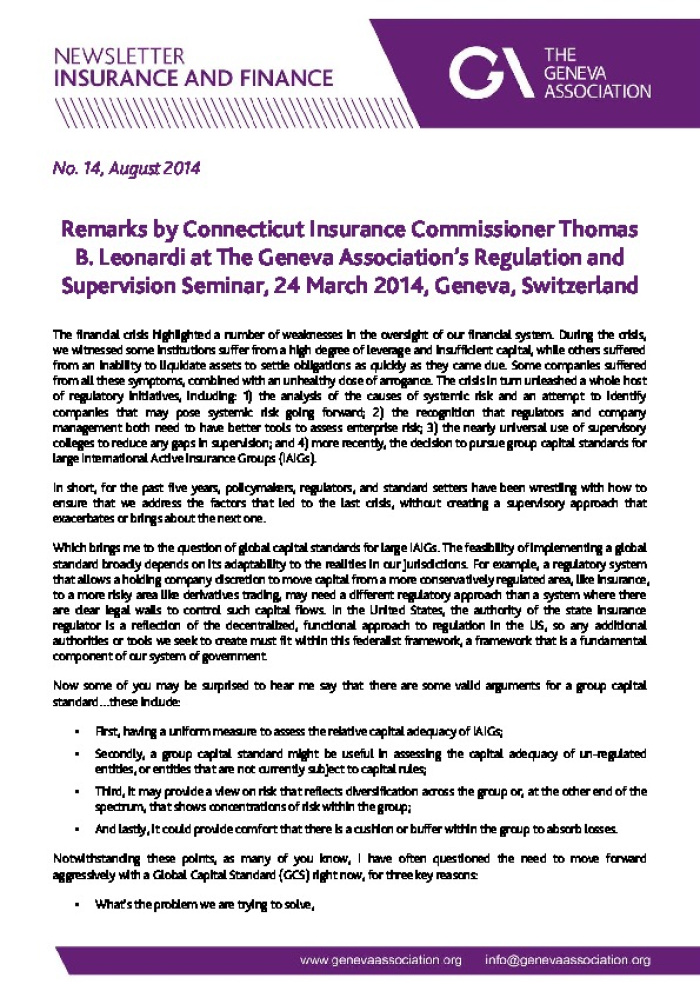Remarks by Connecticut Insurance Commissioner Thomas B. Leonardi at The Geneva Association’s Regulation and Supervision Seminar, 24 March 2014, Geneva, Switzerland
Article from Insurance and Finance Newsletter No.14-Thomas B. Leonardi comments on the prospect of implementing international capital standards in the U.S.

No. 14 , August 2014 Remarks by Connecticut Insurance Commissioner Thomas B. Leonardi at The Geneva Association?s Regulation and Supervision Seminar, 24 March 2014, Geneva, Switzerland The financial crisis highlighted a number of weaknesses in the oversight of our financial system. During the crisis, we witnessed some institutions suffer from a high degree of leverage and insufficient capital, while others suffered from an inability to liquidate assets to settle obligations as quickly as they came due. Some companies suffered from all these symptoms, combined with an unhealthy dose of arrogance. The crisis in turn unleashed a whole host of regulatory initiatives, including: 1) the analys is of the causes of systemic risk and an attempt to identify companies that may pose systemic risk going forward; 2) the recognition that regulators and company management both need to have better tools to assess enterprise risk; 3) the nearly universal us e of supervisory colleges to reduce any gaps in supervision; and 4) more recently, the decision to pursue group capital standards for large International Active insurance Groups (IAIGs). In short, for the past five years, policymakers, regulators, and stan dard setters have been wrestling with how to ensure that we address the factors that led to the last crisis, without creating a supervisory approach that exacerbates or brings about the next one. Which brings me to the question of global capital standards for large IAIGs. The feasibility of implementing a global standard broadly depends on its adaptability to the realities in our jurisdictions. For example, a regulatory system that allows a holding company discretion to move capital from a more conservative ly regulated area, like insurance, to a more risky area like derivatives trading, may need a different regulatory approach than a system where there are clear legal walls to control such capital flows. In the United States, the authority of the state insur ance regulator is a reflection of the decentralized, functional approach to regulation in the US, so any additional authorities or tools we seek to create must fit within this federalist framework, a framework that is a fundamental component of our system of government. Now some of you may be surprised to hear me say that there are some valid arguments for a group capital standard?these include: ? First, having a uniform measure to assess the relative capital adequacy of IAIGs; ? Secondly, a group capital stan dard might be useful in assessing the capital adequacy of un -regulated entities, or entities that are not currently subject to capital rules; ? Third, it may provide a view on risk that reflects diversification across the group or, at the other end of the spectrum, that shows concentrations of risk within the group; ? And lastly, it could provide comfort that there is a cushion or buffer within the group to absorb losses. Notwithstanding these points, as many of you know, I have often questioned the need to move forward aggressively with a Global Capital Standard (GCS) right now, for three key reasons: ? What's the problem we are trying to solve,